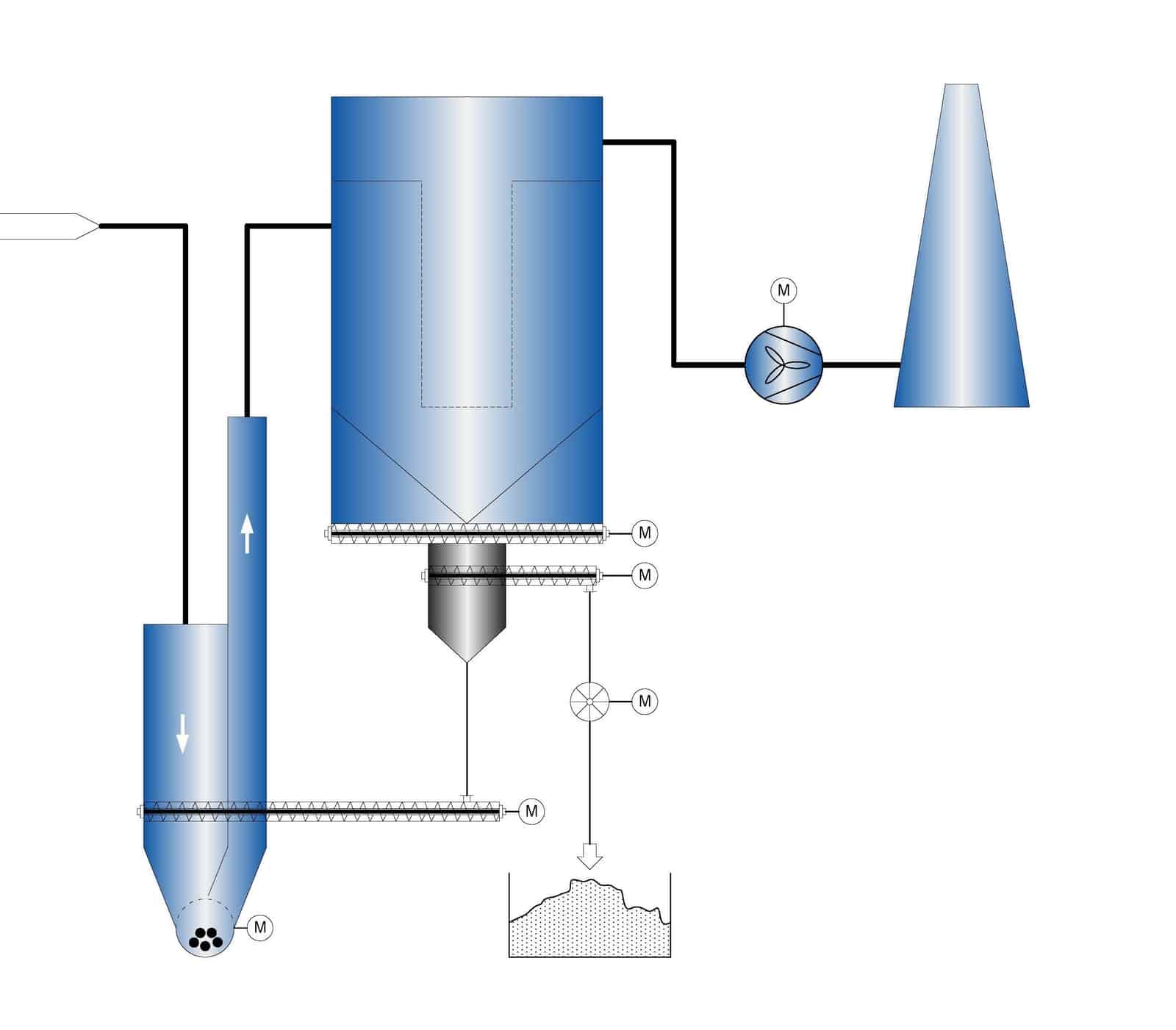LÜHRFILTER has developed different procedures for the following applications:
-
Chemisorption of acidic pollutant gases such as HF, HCl and SO2, with Ca- or Na-based additives
-
Adsorption of PCDD / PCDF as well as Hg and Hg compounds by means of activated carbon / activated coke or other additives with large internal surface
It has been proven that the implementation of high additive particle re-circulation rates, especially when using Ca-based additives, leads to a significant improvement in the separation rate for acidic pollutant gas components such as HF, HCl and SO2 and/or to a reduction in the amount of additive added.
The LÜHRFILTER Conditioning Rotor – Recycle Process enables the operationally reliable re-circulation of large re-circulation quantities, even if problematic particles such as CaCl2 are present in larger quantities in the particle spectrum. A largely homogeneous mixing of the recycled particles with the flue gas flow is achieved. Pneumatic conveying systems, which are often susceptible to faults, are not required.THE SORPTION PROCESSES WE USE ARE BASED ON THE LÜHRFILTER CONDITIONING ROTOR-RECYLE PROCESS (KUV).
PROCESS VARIANTS OF THE CONDITIONING ROTOR-RECYLCE PROCESS (KUV)

To allow the reliable re-circulation of particles separated in the filter into the gas flow upstream filter, the Conditioning Rotor-Recycle Process proved to be advantageous for many applications.
Description of conditioning rotor
The rotor is a hollow cylinder, made of a perforated plate with openings of approx. 30 x 30 mm. Up to 10% of its volume is filled with balls made of heat- and wear-resistant ceramics. The rotor is continuously rotating with approx. 1 rpm by means of a geared motor. The rotation causes the balls to move relatively to each other inside of cylinder and to the perforated shell. The rotor is passed through by the flue gas around its axis of rotation at first in downwards and finally in upwards direction.
The main functions of the conditioning rotor are:
-
Avoidance of particle deposits when reversing a particle-laden gas flow
-
Achievement of a homogeneous distribution of particles in the gas flow even with high particle loads (for example up to n x 100 g/m3)
-
Disintegration of larger agglomerates with a descent velocity higher than the transport velocity in the ascending part of reactor
Description of the Conditioning rotor-recycle process (KUV)
Prior to being discharged out of the filter, the particles separated in the filter are repeatedly re-introduced into the reactor by means of a conveying screw. The particle recycle rate can be adjusted and, if needed, controlled e.g. subject to the current volume flow. Compared to alternative, e.g. pneumatically working re-circulation systems, the Conditioning Rotor-Recycle Process offers the following advantageous features. These are among other things:
-
Mechanical particle transport by means of reliable screw conveyors.
-
Discharge and intermediate storage of the recycled particulate prior to a new introduction into the reactor is not necessary.
-
Securing of a homogeneous distribution of recycled particulate during injection in the gas flow by using the conditioning rotor.
-
No increase of O2 in the gas due to introduction of conveying air.
LÜHRFILTER
IN BRIEF
LÜHRFILTER develops products and procedures for sustainable air pollution control worldwide. The family-owned company founded in 1938 offers efficient and intelligent solutions for the plant construction in nearly all fields of industry.